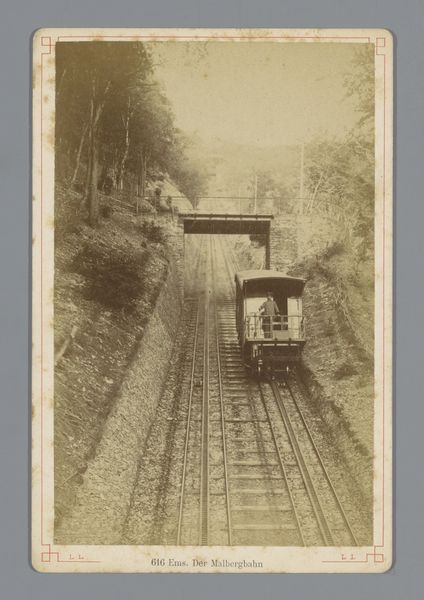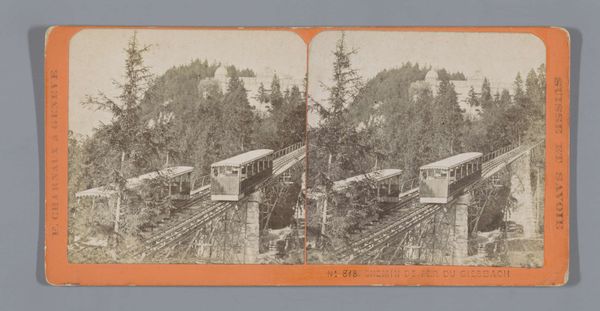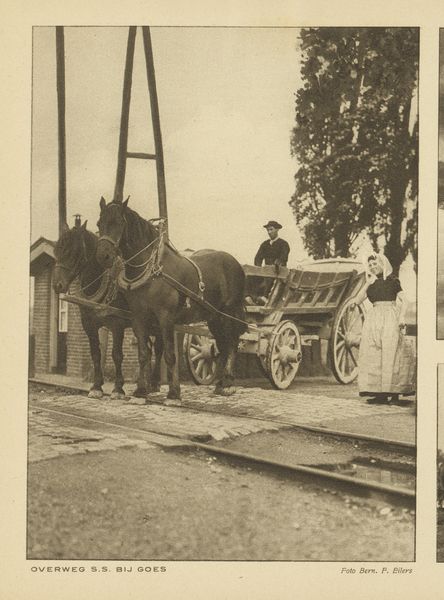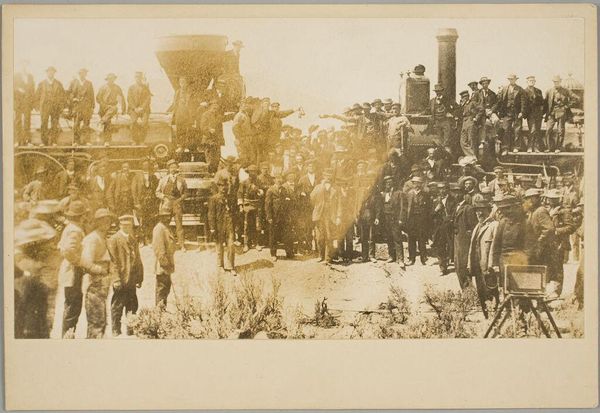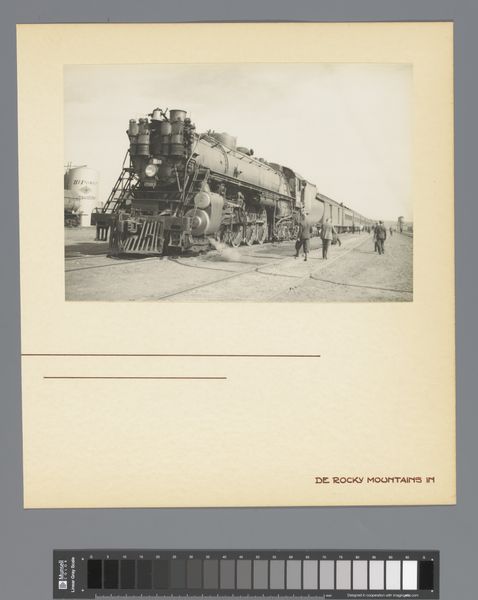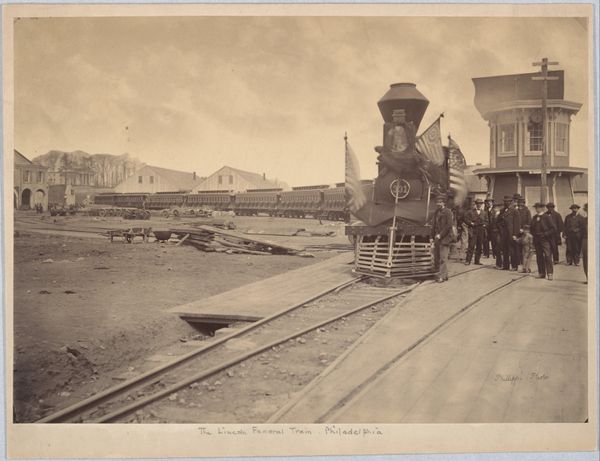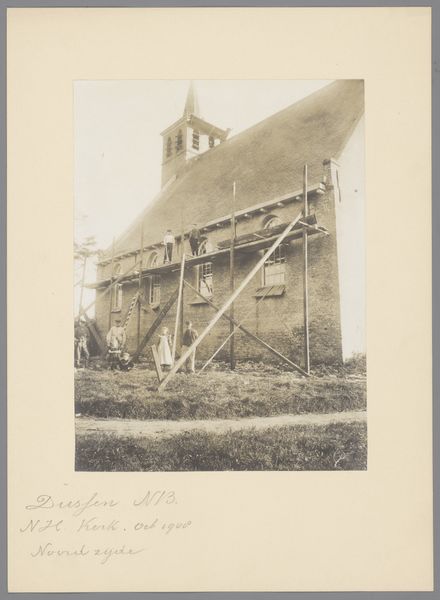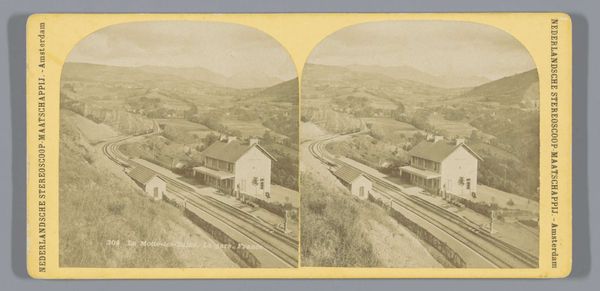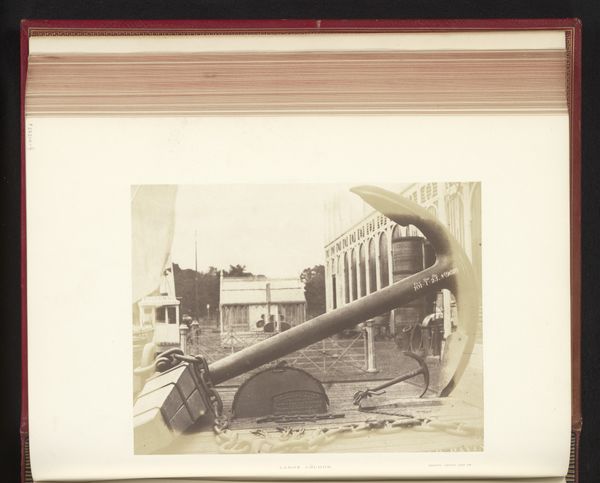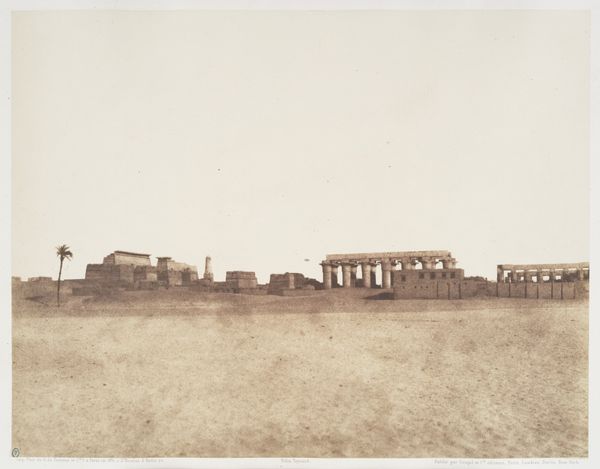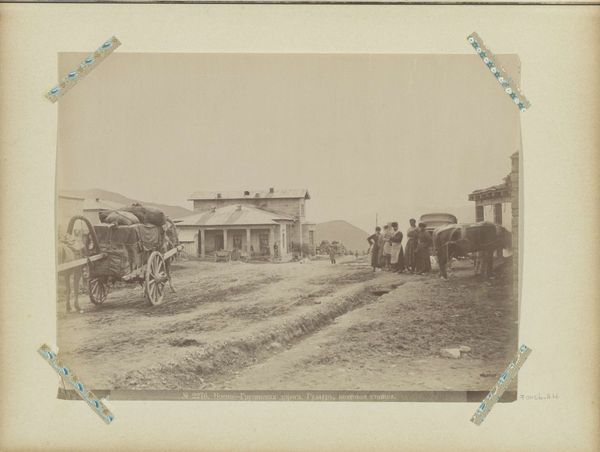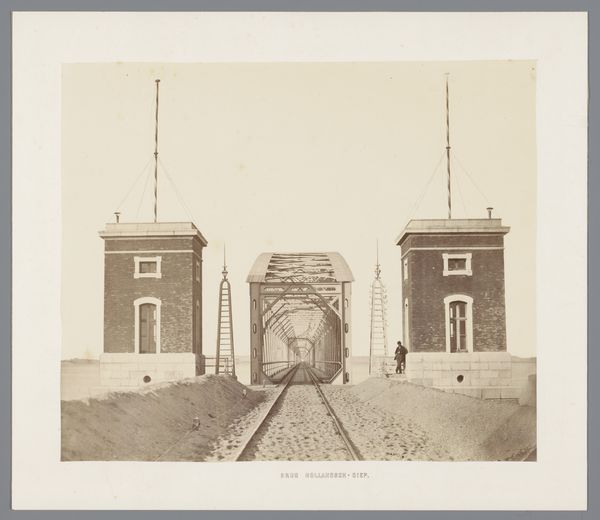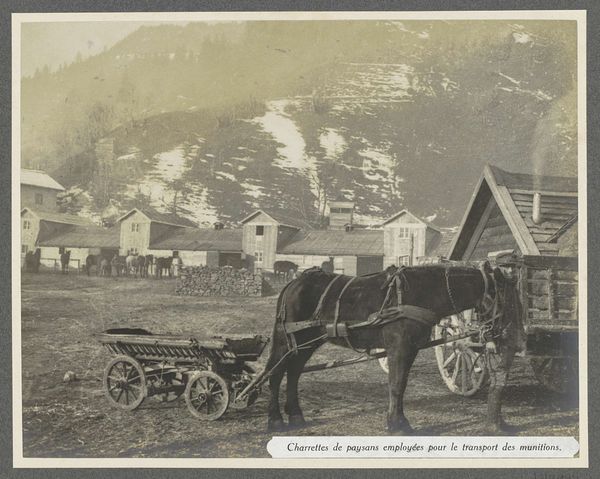
photography, albumen-print
#
landscape
#
photography
#
cityscape
#
albumen-print
#
realism
Dimensions: height 147 mm, width 103 mm
Copyright: Rijks Museum: Open Domain
Editor: Here we have Heinrich Fischer’s "Stoomlocomotief van de kabelspoorweg op de Rigi," a photograph, specifically an albumen print, dating from around 1875 to 1890. I’m struck by how this image captures both progress and a sort of quiet stillness. What symbols or visual elements do you find most resonant here? Curator: I immediately notice the juxtaposition of the train with the church. The locomotive, a symbol of modernity and technological advancement, sits in the foreground. But behind it we have the church, a timeless symbol of faith and tradition. Editor: I hadn't thought of that! Is that contrast common for the period? Curator: Precisely! Think about what these objects signified to people at the time. Trains shrunk distances and redefined our sense of time and space. But, what happens when the sacred, previously at the heart of community identity, starts to compete with new, secular powers like industry and science? The photograph acts as an index for these changing perceptions of space. The visual language asks us, perhaps unconsciously, to meditate on what is lost and gained with such progress. How does the billowing steam play into that dichotomy for you? Editor: Well, the smoke is powerful and suggests speed and industry, yet it also veils the church slightly, obscuring it. It really drives home the theme of change and maybe even disruption! I hadn't appreciated how much meaning could be packed into such a seemingly straightforward image. Curator: Exactly. Images such as this preserve cultural memory. These aren’t just documents of locomotives; they reveal deeper anxieties and celebrations surrounding modernity's impact on the traditional landscape. Hopefully you are considering what this might say about present-day changes, too? Editor: This was very insightful! Now I see the photograph as more than a historical record; it’s a poignant meditation on the relationship between progress and tradition, which feels really relevant even now. Thanks for this new perspective.
Comments
No comments
Be the first to comment and join the conversation on the ultimate creative platform.
